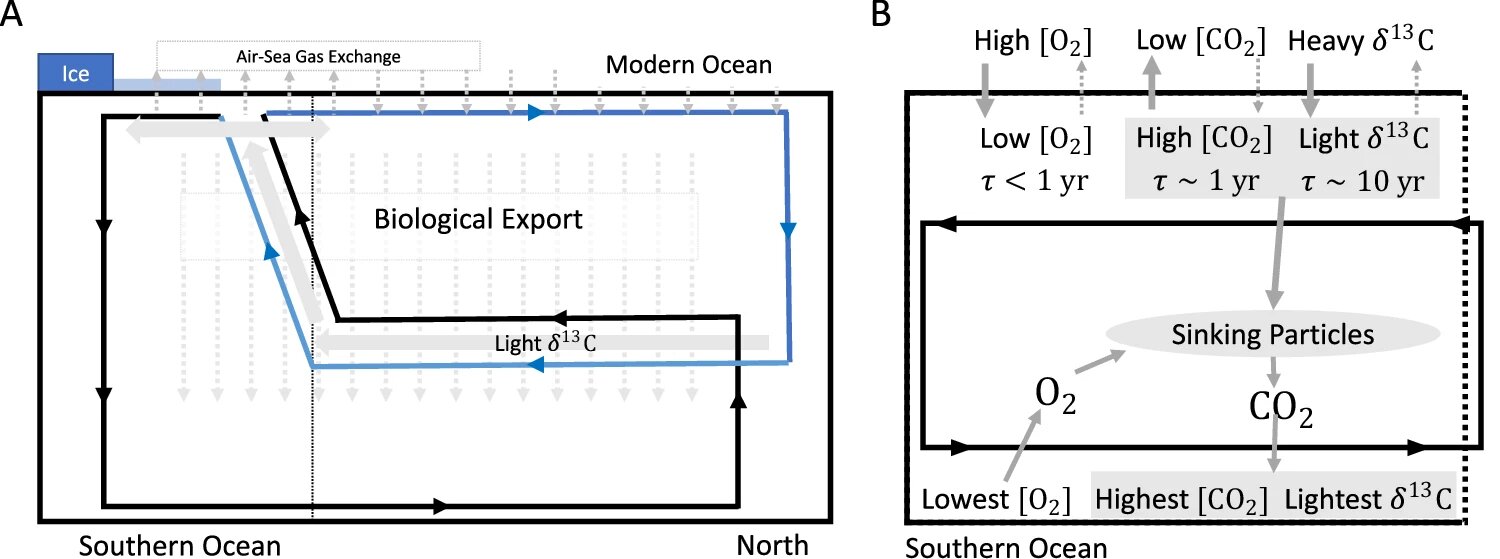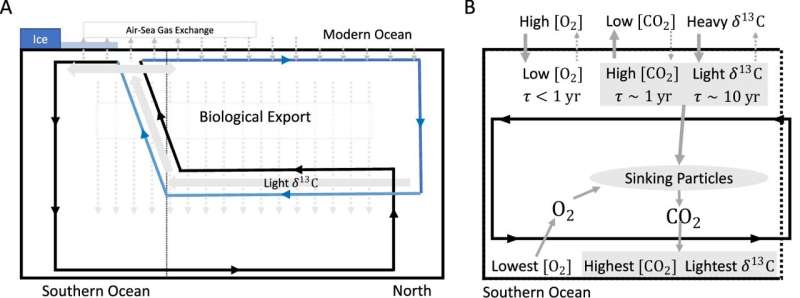

Paleoclimate scientists are trying to understand the causes of the ~90 parts per million (ppmv) atmospheric CO2 swings between glacial and interglacial climates. Even though these cycles between cold and warm periods seem to follow a pattern, researchers believe many different natural processes are involved in causing the CO2 changes.
Anne Willem Omta, visiting assistant professor in the Department of Earth, Environmental and Planetary Sciences at the College of Arts and Sciences, has led a study looking at how much carbon is stored in the ocean, especially the carbon trapped by living things such as plankton. The research team’s findings were published recently in Nature Communications.
Using data from studies that measured carbon isotopes, they found that this stored carbon can explain a change in atmospheric CO2 levels of about 75 ppmv, give or take 40 ppmv.
In analyzing different parts of the ocean, the researchers saw that the amount of regenerated carbon (carbon that has been used and then released back) was about the same during the Last Glacial Maximum (the coldest part of the last ice age) and during the Holocene (the warm period we are in now).
This means that the change in CO2 likely came from something else, perhaps how much carbon the ocean and atmosphere exchanged (disequilibrium), rather than just from how much carbon was stored.
The scientists think this disequilibrium might have been caused by either the expansion of sea ice or changes in how ocean water moves (circulation patterns).
In short, being able to explain climates of the past will put our future projections on a stronger footing.
More information:
Anne Willem Omta et al, Carbon isotope budget indicates biological disequilibrium dominated ocean carbon storage at the Last Glacial Maximum, Nature Communications (2024). DOI: 10.1038/s41467-024-52360-z
Provided by
Case Western Reserve University
Citation:
Researchers investigate changes in atmospheric CO₂ levels between glacial and interglacial climates (2024, October 4)
retrieved 4 October 2024
from https://phys.org/news/2024-10-atmospheric-glacial-interglacial-climates.html
This document is subject to copyright. Apart from any fair dealing for the purpose of private study or research, no
part may be reproduced without the written permission. The content is provided for information purposes only.